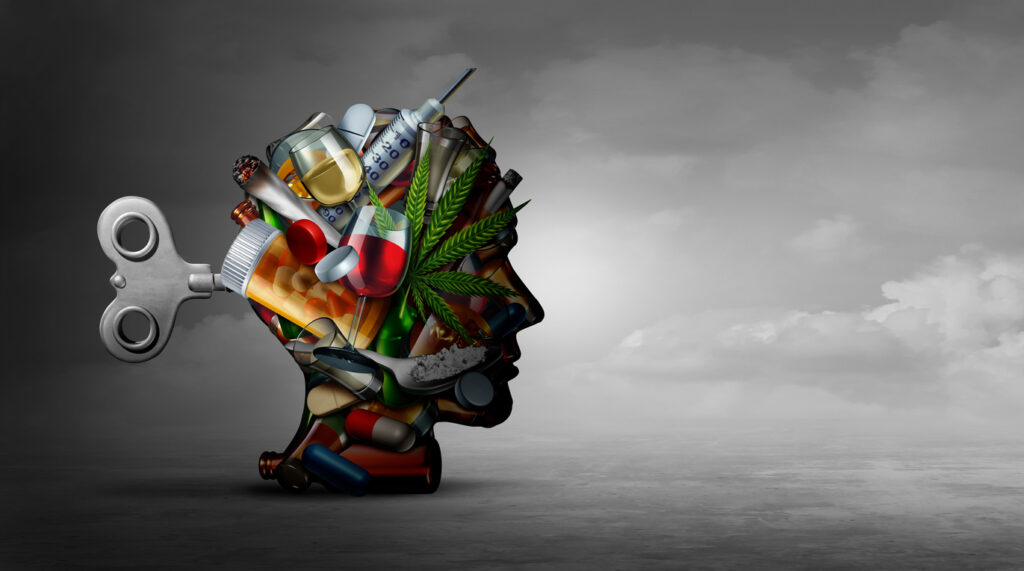Most people are familiar with the drug experiments that use rats to demonstrate how addictive certain drugs are. Rats are hooked up to monitors and given the opportunity to choose regular water or water laced with drugs. In the experiments, rats choose the drugs, and this is used to show how addictive drugs are. In fact, some rats will kill themselves because they take drugs instead of eating or drinking.
Bruce Alexander is an addiction researcher from Canada who took these tests further. In what has become known as the “Rat Park” experiment, he and other researchers showed that the environment rats are in while they’re being tested completely changes rats’ propensity to use drugs.

The Skinner Box
Alexander noted that rats like to run around, play with other rats, hide under shelters, and make baby rats. But in the drug research at that time, none of this was possible. Rats were isolated in hellish contraptions known as “Skinner Boxes” (individual cages that allow researchers to hook up sensors to the rat’s body, thus reducing the rat’s ability to move around).
The Rat Park research was based on this question: “What if all the traditional drug/rat experiments show is that when rats are isolated, and live in horrible environments, they will tend to use drugs?” In other words: what would happen if you put rats in a more natural, non-isolated environment? Would that affect their propensity for addiction?
The researchers built a 95 square foot environment to house a group of 20 rats (both sexes). They equipped this environment with wheels for the rats to run, shelters to hide in, and space to move around in. This place was so nice for the rats that it was given the name “the Rat Park.”

What Happened
Guess what happened? In the rat park, rats were given the choice between plain tap water and water laced with morphine. To the surprise of many, in this new natural environment, most of the rats chose the plain water! Alexander wrote, “Nothing that we tried produced anything that looked like addiction in rats that were housed in a reasonably normal environment.” Even more amazing, rats that were previously addicted to morphine slowly weaned themselves off the drug when placed in the Rat Park. You can read more about these experiments here and here.
For a variety of reasons, Alexander’s work has not gotten the widespread attention that it deserves. Even though he was able to replicate the results of his study, Alexander says his research was “dropped like a stone” in the addiction community. He and his colleagues, who were all just starting out in their careers, moved on to other pursuits. Part of the problem may have been timing: The Rat Park experiments were published in the early 1980s, just as the war on drugs — with its “just say no” and “this is your brain on drugs” PR campaign — was taking hold.
What It Means
I believe that what Alexander and his fellow researchers demonstrated has profound implications for how we understand addiction and how we go about treating it. I have come to believe that careful attention to one’s emotional and spiritual well-being is THE central task of recovery. Our relational, emotional, and spiritual “environment” will make or break our recovery.
Let me put it another way: If your life sucks, it’s really hard to stay sober. You can do it, but it’s really hard, and it’s hard to sustain. It takes a huge effort, laser focus, and lots of time. The fact is, this is how recovery starts for most people. They enter into recovery because their lives suck — their lives are spinning out of control and they are depressed … that’s why they keep turning to their addictive behavior.
So in early recovery we start out from a place of spiritual and emotional ill-health — and in order to get and stay sober, we’ve got to do “whatever it takes.” People often need to take extreme measures: going to meetings every day, making phone calls every day, quitting jobs or refusing business travel that puts them in risky situations, and on and on. This sobriety is necessary in order to do the hard internal work that gets to the root of our addiction.
But over time, the recovery task must also involve a deep and lasting internal transformation:
- getting out of – or making major changes to – dysfunctional relationships
- getting out of – or making major changes to – soul-sucking jobs
- ending patterns of loneliness and isolation
- dealing with health problems
- creating habits and developing hobbies that restore our sanity and joy
- facing our spiritual questions and challenges so that we can live with spiritual integrity
It bears repeating: Lasting recovery is the result of doing the hard work of establishing and maintaining emotional and spiritual health. In the Big Book of AA, they say that sobriety is not a once in a lifetime change, but rather a “24 hour reprieve that is dependent on maintaining a fit spiritual condition.” What they call “maintaining a fit spiritual condition” is what I would call “living with emotional and spiritual health.”
Meanwhile, Back at the Rat Park
Bruce Alexander has continued to write about addiction, reflecting on how his Rat Park research might help people understand the source of addiction. He could not find a way to ethically replicate the study using human subjects — after all, you can’t lock people into a lab environment and give them access to illegal drugs!
However, through study of history and anthropology, he believes he has found human examples that demonstrate the point of the Rat Park experiment: notice what happened with addiction rates when native peoples have been colonized — such as the native populations in the US and Canada. Even though there is no evidence of addiction in native cultures pre-colonization, once colonization happened (and native societies lost their connection to their land, their culture, and their spiritual practices) addiction rates skyrocketed.
This has sometimes been attributed to the fact that these people groups were/are genetically prone to alcoholism or drug addiction, but their own history demonstrates that this is not true. They turned to addiction because their life environment had deteriorated, and they became “caged” in terms of social isolation.
Alexander goes on to write:
“When I talk to addicted people, whether they are addicted to alcohol, drugs, gambling, Internet use, sex, or anything else, I encounter people who really do not have a viable social or cultural life. They use their addictions as a way of coping with their dislocation; as an escape, a pain killer, or a kind of substitute for a full life. More and more psychologists and psychiatrists are reporting similar observations. Maybe our fragmented, mobile, and ever-changing modern society has produced social and cultural isolation in very large numbers of people, even though their cages are invisible!”
“The view of addiction from Rat Park is that today’s flood of addiction is occurring because our hyper-individualistic, hyper-competitive, frantic, crisis-ridden society makes most people feel socially and culturally isolated. Chronic isolation causes people to look for relief. They find temporary relief in addiction to drugs or any of a thousand other habits and pursuits because addiction allows them to escape from their feelings, to deaden their senses, and to experience an addictive lifestyle as a substitute for a full life.”

